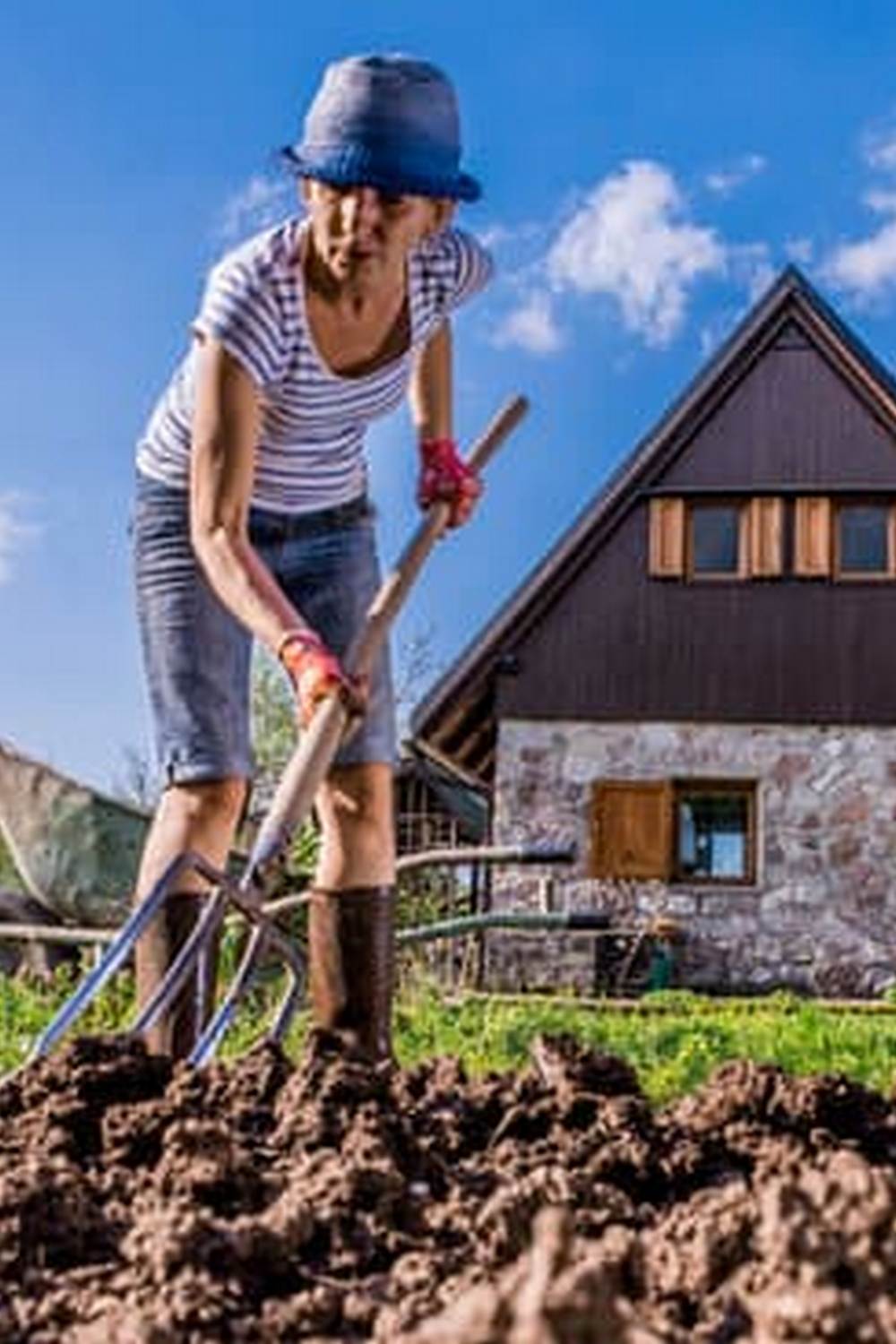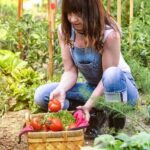Container gardening vegetables plan involves a strategic approach to cultivating fresh produce in limited spaces. By utilizing containers, individuals can enjoy the rewards of homegrown vegetables without the need for a traditional garden plot. This article will delve into the various aspects of container gardening for vegetables, offering insights on selecting containers, choosing suitable vegetables, and optimizing growing conditions.
One of the key advantages of container gardening is its flexibility and accessibility. Whether you have a small balcony, patio, or indoor space, you can create a thriving vegetable garden with the right plan in place. The versatility of container gardening allows you to move your plants as needed to optimize sunlight exposure and airflow-a crucial factor in successful vegetable cultivation.
Furthermore, container gardening offers opportunities for creativity and customization. From choosing the size and material of your containers to selecting a variety of vegetables that suit your taste preferences and available growing area, there are endless possibilities to personalize your container garden. This article will provide valuable guidance on planning your layout, preparing nutrient-rich soil, and addressing common challenges such as pests and diseases for a fruitful harvest.
Choosing the Right Containers for Your Vegetable Garden
When it comes to container gardening vegetables plan, choosing the right containers is crucial for the success of your vegetable garden. The size, material, and drainage of your containers can significantly impact the growth and health of your plants.
Size
The size of your containers will depend on the type of vegetables you plan to grow. Larger vegetables like tomatoes and peppers will require bigger containers to accommodate their root systems, while smaller vegetables like lettuce and herbs can thrive in smaller pots. It’s essential to consider the mature size of the plants when selecting the container size to prevent overcrowding and stunted growth.
Material
Containers come in various materials, including plastic, terracotta, ceramic, wood, and fabric. Each material has its advantages and disadvantages when it comes to container gardening. Plastic pots are lightweight and affordable but may not be as aesthetically pleasing as terracotta or ceramic pots. Terracotta pots are porous and allow for better airflow but can dry out more quickly than plastic pots. Consider factors like durability, aesthetics, insulation properties, and water retention when choosing the material for your containers.
Drainage
Proper drainage is essential for container gardening success. Without adequate drainage holes in your containers, excess water can accumulate at the bottom and lead to root rot or waterlogged soil. Ensure that your containers have sufficient drainage holes at the bottom to allow excess water to escape freely. You can also place a layer of gravel or stones at the bottom of the pot before adding soil to help improve drainage further.
Selecting the Best Vegetables for Container Gardening
Container gardening offers an excellent solution for individuals with limited outdoor space who still want to grow their own vegetables. When selecting the best vegetables for container gardening, it’s essential to consider the space constraints and choose crops that are well-suited for growing in containers. Here are some key considerations to keep in mind when planning your container gardening vegetables plan:
- First, think about the size of your containers and how much room each vegetable plant will need to grow. Some plants require more space for their roots to spread out, while others can thrive in smaller pots.
- Consider the height of the vegetable plants as well. Taller plants like tomatoes or pole beans may require staking or a trellis for support, so make sure your containers can accommodate these structures.
- Take into account the sunlight requirements of each vegetable. Most vegetables need at least 6-8 hours of sunlight per day to thrive, so place your containers in a sunny spot on your balcony or patio.
By carefully selecting the best vegetables for container gardening based on these considerations, you can maximize your limited space and still enjoy a bountiful harvest. Some popular options for container gardening vegetables plan include:
- Tomatoes: Choose dwarf or determinate varieties that do well in smaller pots and produce abundant fruit.
- Peppers: Bell peppers, chili peppers, and sweet peppers all grow well in containers and add color and flavor to your dishes.
- Lettuce: Leafy greens like lettuce are perfect for container gardening as they don’t require a lot of space to grow and can be harvested continuously for fresh salads.
With careful planning and selection of the best vegetables suited for container gardening, you can create a thriving vegetable garden even in a small urban setting.
Planning Your Container Garden Layout
When planning your container garden layout for growing vegetables, it is essential to consider how to maximize sunlight and air circulation to ensure the health and productivity of your plants. Proper placement of your containers can make a significant difference in the growth and yield of your vegetables. Here are some tips to help you plan your container garden layout effectively:
- Position your containers in an area that receives at least 6-8 hours of direct sunlight per day, especially for sun-loving vegetables like tomatoes, peppers, and cucumbers.
- Avoid placing containers in areas with too much shade or where they may be blocked by walls or tall structures. Consider using plant stands or shelving units to elevate containers if needed.
- Rotate your containers regularly to ensure all sides of the plants receive adequate sunlight, promoting even growth and preventing leggy plants.
Proper air circulation is also crucial for preventing mold, mildew, and other diseases that can thrive in damp conditions. When planning your container garden layout, consider the following tips to maximize air circulation:
- Space out your containers to allow for airflow between them. Avoid overcrowding plants, as this can lead to poor ventilation and increase the risk of disease.
- Prune dense foliage or remove leaves that block airflow within and between plants. This will also help prevent moisture buildup and improve overall plant health.
- Place taller plants at the back or center of your container garden layout to prevent them from shading smaller plants nearby. This will ensure that all plants receive adequate sunlight and air circulation.
By carefully planning your container garden layout with a focus on maximizing sunlight exposure and air circulation, you can create an ideal environment for growing healthy and productive vegetables in limited space. Remember to regularly assess and adjust the positioning of your containers as needed throughout the growing season to optimize conditions for successful vegetable gardening in containers.
Soil Selection and Preparation
Container gardening is a wonderful way to grow your vegetables, especially if you have limited outdoor space or poor soil quality in your area. One of the key factors in successful container gardening is proper soil selection and preparation. The right soil will provide essential nutrients for your plants to thrive and produce a bountiful harvest.
When choosing soil for your containers, opt for a high-quality potting mix that is lightweight, well-draining, and rich in organic matter. Avoid using garden soil as it tends to be too heavy and may not provide adequate aeration for the roots of your plants. Look for potting mixes specifically formulated for container gardening vegetables plan, which often contain ingredients like peat moss, perlite, vermiculite, and compost.
To prepare your soil for planting, fill your containers with the potting mix up to an inch below the rim. This will allow space for watering without overflowing. Before adding your plants, moisten the soil thoroughly to ensure even distribution of water throughout the container. Consider mixing in some slow-release fertilizer or compost to provide an extra boost of nutrients for your vegetable plants as they grow.
| Soil Selection Tips | Preparation Techniques |
|---|---|
| Choose a high-quality potting mix with organic matter | Fill containers up to an inch below the rim |
| Avoid using heavy garden soil | Moisten soil thoroughly before planting |
| Look for mixes formulated for vegetable container gardening | Mix in slow-release fertilizer or compost before planting |
By taking the time to select the right soil and properly prepare it for your container garden, you are setting yourself up for success in growing healthy and productive vegetable plants. Remember that good soil is the foundation of any successful garden, whether it’s in traditional ground plots or containers on a balcony or patio. With nutrient-rich soil, your vegetables will have everything they need to flourish and reward you with a delicious harvest.
Planting and Transplanting Techniques
When planting your vegetables in containers, make sure to use high-quality potting soil that is specifically formulated for container gardening. This type of soil is lightweight, provides good drainage, and contains the necessary nutrients to support plant growth. Additionally, ensure that your containers have sufficient drainage holes at the bottom to prevent waterlogging, which can lead to root rot.
Transplanting seedlings from trays or starter pots into larger containers is another important step in maintaining a healthy container garden. When transplanting, be gentle with the roots to avoid damaging them and disturb the plant as little as possible. Water the plant immediately after transplanting to help reduce transplant shock. Providing adequate care during the planting and transplanting process will set your container garden up for success and ensure a bountiful harvest of fresh vegetables.
| Vegetables | Suitable Containers |
|---|---|
| Tomatoes | Large containers with stakes or cages for support |
| Peppers | Medium-sized containers with good drainage |
| Lettuce | Shallow containers or window boxes |
Watering and Fertilizing
Watering Tips for Container Vegetables
One of the most crucial aspects of container gardening is ensuring that your vegetables receive the right amount of water. Containers tend to dry out faster than traditional garden beds, so it’s important to monitor soil moisture regularly. To check if your plants need watering, stick your finger into the soil about an inch deep – if it feels dry, it’s time to water.
When watering your container vegetables, aim to water deeply but infrequently. Water until you see it draining out from the bottom of the container, ensuring that roots receive ample moisture. It’s generally better to water in the morning or evening when temperatures are cooler, reducing evaporation loss during hot days.
Fertilizing Techniques for Container Vegetables
To promote healthy growth and a bountiful harvest from your container gardening vegetables plan, it’s essential to provide proper nutrients through fertilization. Choose a good quality fertilizer specifically formulated for vegetables in containers, as they have specific nutritional needs. Organic options like compost or worm castings are excellent choices for feeding your plants naturally.
It’s recommended to fertilize your container vegetable garden every 2-4 weeks during the growing season, following package instructions for application rates. Be mindful not to over-fertilize, as this can lead to nutrient imbalances and potentially harm your plants. By maintaining a regular fertilizing schedule and monitoring plant health, you can ensure that your vegetables receive the necessary nutrients for optimal growth and productivity.
Dealing With Common Pests and Diseases in Container Gardening
Dealing with pests and diseases is an inevitable part of gardening, whether you have a traditional garden or a container garden for growing vegetables. One of the advantages of container gardening is that it can help reduce the risk of pests and diseases compared to in-ground gardening. However, it is still important to be proactive in preventing and managing any issues that may arise.
To start, practice good garden hygiene by regularly cleaning your containers, tools, and surrounding area to prevent the buildup of potential pest habitats. Inspect your plants frequently for any signs of pests or diseases such as holes in leaves, yellowing foliage, or unusual spots. Identifying these issues early on can help you take immediate action before they become a more serious problem.
When it comes to pest management in container gardening, consider using natural remedies such as insecticidal soaps, neem oil, or beneficial insects like ladybugs to combat common pests like aphids or spider mites. Additionally, companion planting certain herbs or flowers known for repelling pests can also help protect your vegetable plants.
If a disease does occur, remove any affected plant parts immediately to prevent further spread and consider using organic fungicides as needed. By being vigilant and implementing preventive measures, you can maintain a healthy crop of vegetables in your container garden.
Harvesting and Maintenance
Container gardening vegetables plan allows individuals to enjoy the rewards of cultivating their own fresh produce, even in limited urban spaces. By carefully selecting the right containers, choosing suitable vegetables, and ensuring proper care throughout the growing season, gardeners can achieve a bountiful harvest from their container vegetable garden.
As the gardening season progresses, regular maintenance is essential to ensure healthy plant growth and maximize yields. Regular watering is crucial, especially during hot summer months when containers can dry out quickly. Additionally, fertilizing on a consistent schedule will help provide essential nutrients for robust vegetable development. Monitoring for pests and diseases is also important to address any issues promptly and protect the plants.
Ultimately, harvesting the fruits of your labor is a fulfilling experience that highlights the success of your container gardening vegetables plan. From picking ripe tomatoes to harvesting crisp lettuce leaves, enjoying home-grown produce adds a sense of accomplishment and satisfaction. With proper maintenance and care, container gardens can provide a continuous supply of fresh vegetables throughout the growing season, offering both nourishment and enjoyment for gardeners of all levels.
Frequently Asked Questions
What Vegetables Grow Well Together in Containers?
Some vegetables that grow well together in containers include tomatoes, basil, and peppers because they have similar water and sunlight requirements. Additionally, leafy greens like lettuce and spinach can be grown side by side since they don’t compete for space.
What Vegetables Are Good for Container Gardening?
Vegetables that are good for container gardening are those that have compact growth habits like cherry tomatoes, radishes, and green beans. Herbs such as mint, chives, and parsley also thrive in containers due to their limited space requirements and versatility in culinary use.
What Is the Best Layout for a Vegetable Garden?
The best layout for a vegetable garden depends on factors like sunlight exposure, soil quality, and plant compatibility. A common layout is the raised bed method, which allows for better drainage and soil quality control.
Another popular option is the square foot gardening layout, maximizing space efficiency by dividing the garden into small square sections for different crops. Ultimately, the best layout will depend on your specific gardening goals and constraints.

If you’re looking to get into vegetable gardening, or are just looking for some tips on how to make your current garden better, then you’ve come to the right place! My name is Ethel and I have been gardening for years. In this blog, I’m going to share with you some of my best tips on how to create a successful vegetable garden.





